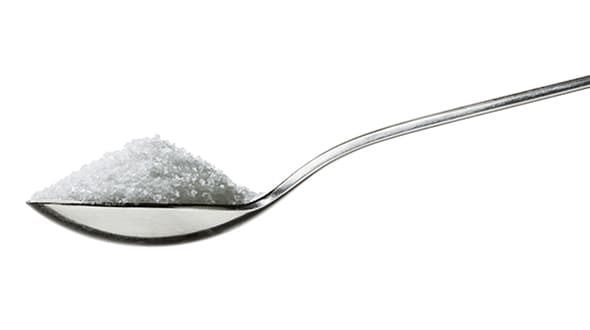7 hidden side effects of sugar
Rising obesity levels and prevalence of type 2 diabetes are highlighting concerns about sugar. Here’s why you should address your sugar habits.
Fit&Well blog
September 2016
The maximum recommended daily intake of sugar is 6 teaspoons a day, but research suggests Australians are consuming more than triple that amount – possibly without realising it – via added sugar in foods including bread and sauces.

Prevention warns overconsumption of sugar poses the following health risks – and offers tips for what you can do it about it.
- Sugar makes your organs fat
A diet high in sugar, and fructose, a common sugar-like food additive, triggers your liver to store fat, which can lead to non-alcoholic fatty liver disease – a condition rarely seen prior to 1980.
What you can do: check the labels on foods – especially biscuits, cereals, fruit juices, snack bars and yoghurt – and opt for ones that contain little or no fructose. - It can lead to heart disease
Chronically high insulin levels cause the muscle cells around each blood vessel in your arteries to grow faster than normal, leading to high blood pressure.
What you can do: count the grams of sugar you’re consuming and aim to stick to the daily limit: 20g for women, 36g for men, 12g for children. - It plays havoc with cholesterol levels
Recent studies show people consuming the highest level of added sugars also recorded the biggest spike in levels of unhealthy cholesterol, and the lowest levels of healthy cholesterol levels.
What you can do: eating protein-rich eggs for breakfast helps combat sugar cravings. - It’s linked with Alzheimer’s disease
US research linking insulin resistance and high fat diets to Alzheimer’s portrays the condition as a metabolic disease where the brain’s ability to process glucose is damaged.
What you can do: avoid sweet, fatty foods. Here is a list of 57 sneaky names for sugar that you may not be aware of. - It turns you into an addict
Sugar triggers the release of chemicals – opioids and dopamine – that activate the brain’s pleasure centre. It doesn’t take long to acquire a tolerance, meaning you need larger doses.
What you can do: cut down on the sweet stuff and allow at least a week for your taste buds to adjust. To get over the hump, try eating smaller meals more often and, if you can’t fight the craving, opt for a sweet treat of no more than 150 calories. Nuts, fruit and unsweetened popcorn are also healthier options. - It disables your appetite control
Fructose acts negatively on the leptin hormones that tell your brain when you have eaten enough. A high fructose diet can you leave you feeling hungry even when you’re overeating.
What you can do: walk it off. Brief exercise, such as a 15-minute walk, has been shown to help reduce sugar cravings. - It can make you depressed
Apart from the fact it takes just 30 minutes to go from a sugar rush to a crash, long-term junk and sugary food consumers face an almost 40 per cent higher risk of developing depression than healthy eaters.
What you can do: take an honest look at your diet, figure out exactly how much sugar you’re consuming and aim to limit your intake and make healthier choices.